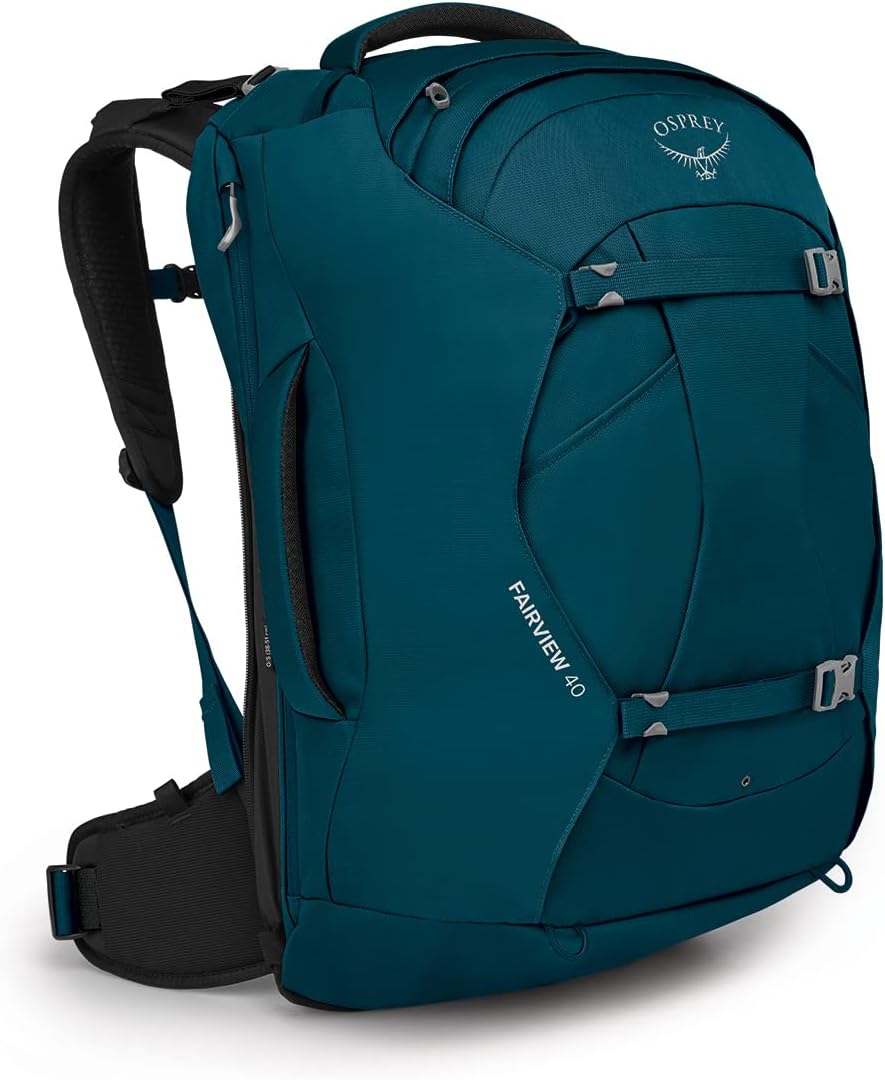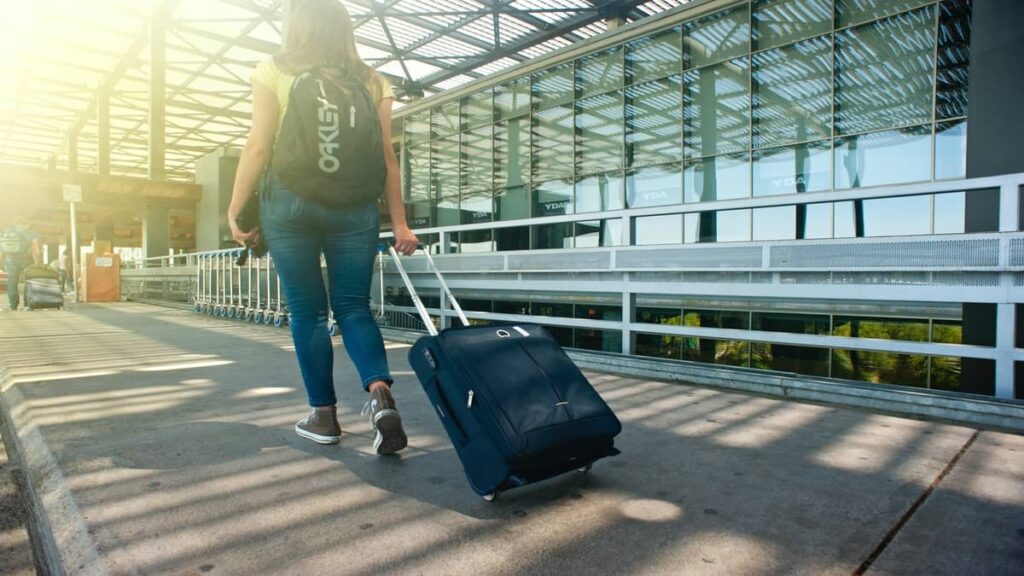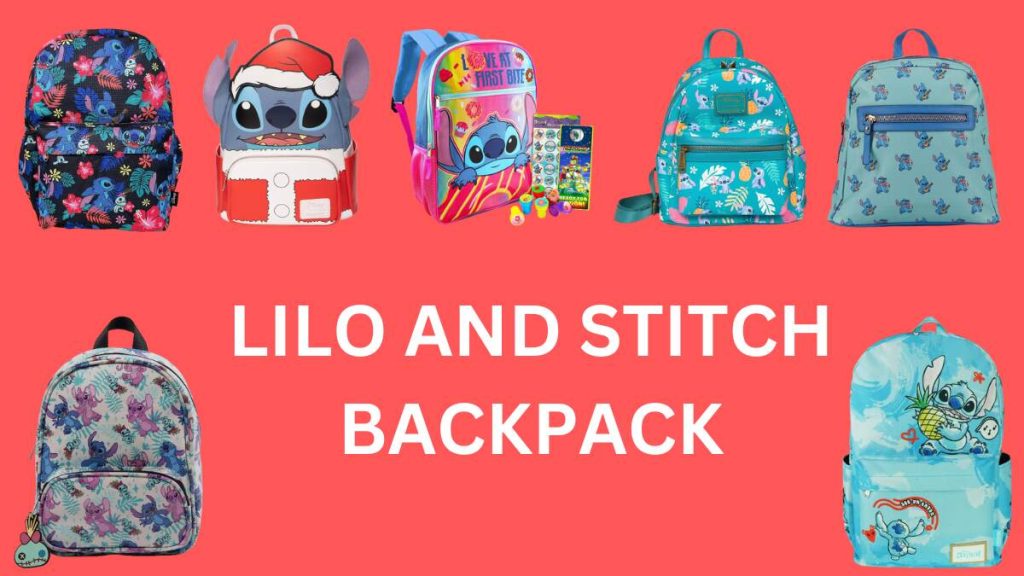Packing a backpack for travel may seem straightforward, but doing it efficiently can make a significant difference in your overall experience. Whether you’re heading out for a weekend getaway, an extended vacation, or an adventurous hike, knowing how to pack a backpack for travel can save you from common mishaps like overpacking, forgetting essentials, or struggling with heavy, unbalanced loads. In today’s fast-paced travel world, where airlines impose strict baggage limits and the need for mobility is greater than ever, smart packing isn’t just about fitting everything into your backpack—it’s about maximizing space, staying organized, and ensuring you have what you need without the extra weight. With careful planning and a few strategic packing techniques, you can make your journey smoother, more enjoyable, and less stressful. In this guide, we will explore step-by-step instructions on how to pack a backpack for travel efficiently, covering everything from choosing the right backpack and essential items to balancing the load and keeping your belongings secure. Whether you’re a seasoned traveler or embarking on your first trip, mastering these packing tips will help you travel light and travel smart.
Pack a Backpack for Travel: Look for better
Backpack Size and Capacity
The first step in selecting the right travel backpack is determining the appropriate size and capacity for your needs. Backpacks are measured in liters, with common options ranging from 20L to 70L or more. For short trips, a smaller backpack between 20L and 30L may suffice, allowing you to pack light and stay mobile. However, for longer journeys or multi-destination trips, a larger backpack with a capacity of 40L to 50L might be more suitable. It’s important to strike a balance between packing enough essentials and keeping the bag lightweight. Overpacking a large bag can quickly make it cumbersome and exhausting to carry. When learning how to pack a backpack for travel, consider the duration of your trip, the type of items you need to bring, and your ability to carry the load comfortably.
Comfort and Fit
A well-fitting backpack is essential for comfortable travel, especially if you plan to carry it for extended periods. Look for a backpack that has adjustable shoulder straps, hip belts, and chest straps to distribute the weight evenly across your body. This will help prevent back pain and ensure that the load doesn’t strain your shoulders or lower back. Padded straps and a cushioned back panel can also add extra comfort during long walks or hikes. When choosing the right fit, the backpack should rest on your hips rather than pulling from your shoulders. This ergonomic design reduces the strain on your back, making it much easier to manage the load. Whether you’re traveling through airports or trekking in the mountains, comfort is key when you’re learning how to pack a backpack for travel successfully.
Durability and Material
The durability of your backpack is another critical factor to consider, especially if you’ll be traveling through diverse environments. Look for backpacks made from high-quality, weather-resistant materials such as nylon or polyester. These fabrics are known for their durability and ability to withstand wear and tear. Waterproof or water-resistant materials are particularly useful for protecting your belongings during rainy weather or if you’re near water bodies. You should also check for reinforced stitching, strong zippers, and durable buckles to ensure that your backpack can handle the rigors of travel. A backpack that is tough enough to endure rough handling but lightweight enough to carry comfortably is an ideal choice for frequent travelers.
Compartments and Organization
When choosing a travel backpack, the number and type of compartments can greatly influence your packing efficiency. Backpacks with multiple compartments allow you to organize your belongings more effectively, separating clothes, electronics, toiletries, and other items. Some backpacks have specific compartments designed for laptops, tablets, or hydration systems, making them convenient for tech-savvy travelers. Side pockets are great for water bottles, while front pockets can hold items you need to access quickly, such as travel documents or snacks. Internal compression straps can also help you maximize space and keep your items securely in place during transit. A well-organized backpack can save you time and hassle by ensuring that your essentials are easy to reach and properly protected.
Security Features
Security is a top priority when traveling, so look for backpacks with features designed to protect your belongings. Many travel backpacks come with lockable zippers, which can help deter theft, especially in crowded areas like airports, bus stations, or tourist spots. Some backpacks are also equipped with RFID-blocking pockets to protect your cards from electronic pickpocketing. Anti-theft designs such as hidden compartments and cut-resistant materials can give you peace of mind while exploring unfamiliar destinations. It’s also a good idea to invest in a backpack that fits close to your body, making it harder for thieves to grab or access your belongings. With these security measures in place, you can travel confidently, knowing that your valuables are safe.
a. tomtoc Travel Backpack 40L, TSA Friendly Flight Approved Carry-on Luggage
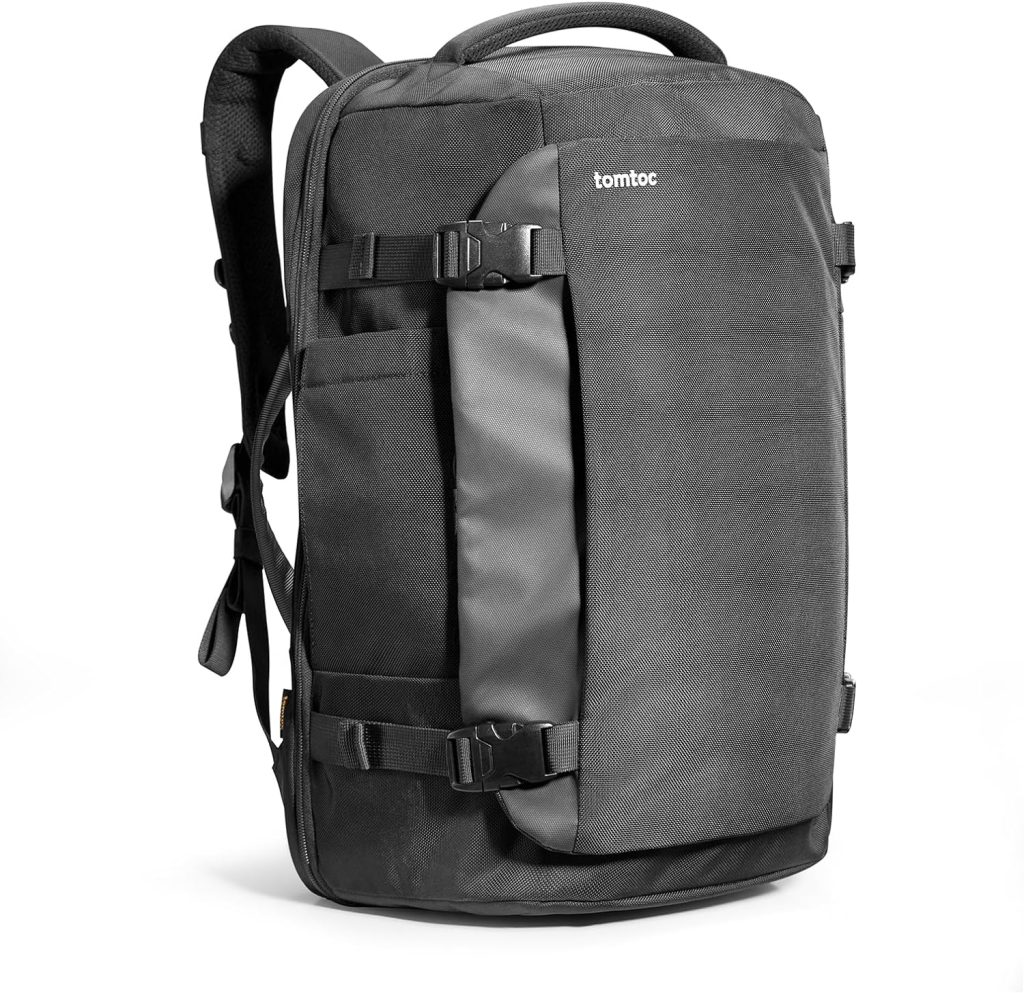
tomtoc Travel Backpack 40L is a versatile and durable carry-on backpack designed for both business and leisure travel. With its spacious interior and multiple compartments, it offers ample storage for all your essentials. The backpack is TSA-friendly and flight-approved, making it ideal for air travel. Its comfortable design and premium materials ensure a comfortable and enjoyable travel experience.
Product Features:
- Large Capacity: Provides ample space for all your travel essentials, including a 17.3-inch laptop.
- Organized Storage: Features multiple compartments and pockets for efficient organization.
- TSA-Friendly: Laptop compartment opens 90°-180° for easy security scanning.
- Durable Construction: Made of premium YKK zippers and recycled fabric for long-lasting durability.
- Comfortable Design: Padded back panel and contoured shoulder straps for ergonomic comfort.
Advantages and Disadvantages:
Advantages:
- Versatile: Suitable for both business and leisure travel.
- Spacious: Offers ample storage for all your essentials.
- Durable: Constructed with high-quality materials.
- Comfortable: Designed for easy carrying and long-term use.
- Sustainable: Made from recycled materials.
Disadvantages:
- Weight: May be heavier than some other carry-on backpacks.
- Price: May be more expensive than some budget options.
Overall, the tomtoc Travel Backpack 40L is a well-designed and durable backpack that offers excellent value for its price. Its spacious interior, organization features, and comfortable design make it a great choice for travelers who need a reliable and versatile carry-on bag.
Style and Aesthetics
While functionality and comfort are the most important aspects of a travel backpack, the style and aesthetics should also suit your personal preferences. Backpacks come in a wide range of colors and designs, from minimalist, sleek models to more rugged, adventure-ready options. Choose a backpack that reflects your travel style, whether it’s a casual city trip or a rugged outdoor adventure. Some travelers prefer a minimalist design that blends in with urban environments, while others may opt for a more robust design for nature-focused excursions. Ultimately, your backpack should be a reflection of your travel goals and lifestyle, combining both aesthetics and practicality.
Difference Between a Travel Backpack and a Hiking Backpack
When it comes to preparing for a trip, the type of backpack you choose is crucial. While many travelers opt for hiking backpacks, they often end up being the wrong tool for the job. A travel backpack is specifically designed for international trips and urban exploration. The key difference lies in accessibility and size. Unlike hiking backpacks, which are typically top-loading and hard to organize, a travel backpack opens from the front like a suitcase. This design allows you to access all your belongings quickly and easily, avoiding the need to rummage through layers of clothes and gear. Travel backpacks are also carry-on-sized, making them ideal for air travel. Hiking backpacks, on the other hand, are often too large to bring as carry-on luggage and are less organized for easy packing. Understanding these differences is essential when learning how to pack a backpack for travel effectively.
The Convenience of Front-Loading Design
A major advantage of travel backpacks is their front-loading feature, which sets them apart from hiking backpacks. With a front-loading design, you can unzip the entire front panel, allowing you to see and access everything inside at once. This is incredibly convenient when you need to find something quickly, such as a change of clothes, toiletries, or travel documents. In contrast, a top-loading hiking backpack requires you to unpack from the top down, which can be frustrating and time-consuming. The front-loading feature makes organization more manageable and keeps your items neatly in place, reducing the chance of losing things in the depths of your bag. This ease of access is why choosing the right design plays a vital role in how to pack a backpack for travel efficiently.
Optimal Organization with Compartments
One of the biggest benefits of a travel backpack is the built-in compartments and pockets, designed to keep your belongings organized. A good travel backpack should have one or two main compartments for clothes, a separate compartment for your laptop or other electronics, and additional pockets for smaller items. This organizational structure ensures that everything has its place, making it easy to pack and unpack quickly. Front pockets are particularly useful for items that need to be accessed frequently, such as snacks, travel documents, or your phone charger. Having these extra compartments not only helps you stay organized, but it also maximizes the use of space, allowing you to pack more without creating clutter. As we discuss how to pack a backpack for travel, proper use of these compartments will be crucial for efficient packing.
Carry-On Size: The Perfect Fit for Air Travel
When traveling internationally or domestically, dealing with airport baggage restrictions is a common concern. This is where a travel backpack truly shines. Designed to be carry-on-sized, it eliminates the need to check your luggage, saving time and avoiding the risk of lost baggage. Most airlines allow carry-on bags that meet specific size restrictions, and travel backpacks are made to fit these standards. Hiking backpacks, on the other hand, are often too bulky to qualify as carry-on luggage, forcing travelers to check their bags. The compact size of a travel backpack allows you to move seamlessly through airports, train stations, and other travel hubs without the hassle of oversized luggage.
Front Pockets for Quick Access
Another essential feature of a travel backpack is the inclusion of front pockets, designed for quick access to smaller items you may need during your trip. These pockets are perfect for keeping things like your passport, boarding pass, headphones, and snacks within easy reach without having to open the main compartment. This extra storage space ensures you can access your essentials without disrupting the rest of your neatly packed belongings. While hiking backpacks tend to focus more on outdoor gear storage, a travel backpack’s front pockets are specifically designed for the type of items frequent travelers need on hand.
What Goes Where: Packing Your Travel Backpack
When preparing for air travel, knowing how to efficiently pack your travel backpack is essential. Start by following a basic carry-on packing list, which includes all your essentials. Once you have the foundation, you can tailor your packing list based on your destination and the length of your trip. The key is to pack only what you need, avoiding excess items that will weigh you down. Essential items such as clothing, toiletries, electronics, and travel documents should be prioritized. If you’re wondering how to pack a backpack for travel, it’s important to focus on organizing items properly to avoid clutter and ensure easy access during your journey.
Clothes in the Main Compartment
When packing for air travel, your clothes should be stored in the main compartment of your backpack. This is the largest section and allows for easy access to your primary wardrobe. Make sure to pack items according to their weight, with heavier clothes, such as jeans or jackets, closer to your back for better weight distribution. If you are carrying a personal item like a small bag or tote, it’s a good idea to place an extra layer, such as a sweater or jacket, in there to have quick access during the flight. Organizing your clothes properly in the main compartment ensures you’ll have easy access to essentials and keep your load balanced.
Toiletries for Easy Access
Your toiletries should be packed in a clear, one-quart toiletry bag, which can either go in the main compartment or the front pocket of your travel backpack. If you don’t have TSA PreCheck, the front pocket is better for quick access when going through airport security, allowing you to remove them without disturbing the rest of your belongings. However, if you are eligible for TSA PreCheck, you can safely keep the toiletry bag in the main compartment. Either way, having them in a convenient spot will make it easier to retrieve them when needed. Proper placement of toiletries is essential when learning how to pack a backpack for travel, as it simplifies your security experience.
Laptop and Electronics in the Laptop Compartment
Most travel backpacks come with a designated laptop compartment, typically located at the back, close to your body. This is the ideal spot for packing your laptop and other electronics like tablets, ensuring they remain safe and stable throughout your journey. The compartment should be padded to protect your devices, and placing them near your back helps with proper weight distribution. It’s essential to secure your electronics close to your body for better balance and to reduce the strain on your shoulders. Packing this way also makes it easier to retrieve your laptop at airport security.
Water Bottle in the Side Pocket
A stretchable side pocket is designed specifically for your water bottle. Keeping your water bottle on the outside of your backpack allows for easy access during your journey, ensuring you stay hydrated without having to dig through your main compartment. This placement also prevents any potential leaks from damaging your clothes or electronics inside the bag. Make sure the bottle fits snugly into the pocket to avoid it falling out while you move around.
In-Flight Essentials in the Front Pocket
Items that you’ll need access to during the flight, such as snacks, a Kindle, earphones, or a travel pillow, should go in the front pocket of your backpack or your personal item. This makes them easy to grab without having to open the main compartment, keeping the rest of your bag organized. Smaller items like your boarding pass, passport, or tickets can be placed in hip belt pockets if your backpack has them, allowing you to access them quickly as you move through the airport.
Weight Distribution: Balancing Your Load
Heaviest Items Close to Your Back
When packing your travel backpack, it’s important to manage the weight distribution to make carrying it more comfortable. The heaviest items, such as a laptop, shoes, or thick jackets, should be placed close to your back, in the vertical middle of your pack. This ensures that the center of gravity is as close to your body as possible, making the load easier to manage. If heavy items are packed too far away from your body, your backpack will feel much heavier and pull on your shoulders, causing discomfort.
Medium-Weight Items Towards the Top
Medium-weight items, such as toiletries or mid-weight clothes like sweaters and pants, should be packed above your heavier items. Keeping these in the top section of your backpack ensures they don’t weigh down the lighter items below and that they are easily accessible if needed. This arrangement helps maintain balance in your bag and keeps the bulk of the weight distributed in a way that makes the backpack more comfortable to carry.
Lightweight Items at the Bottom
Lightweight items like t-shirts, socks, or underwear can be packed at the bottom of your backpack. Since they don’t add significant weight, they won’t affect the balance of your bag. Ensure that these items are packed tightly to prevent them from collapsing under the weight of the heavier items above them. By organizing your lightweight clothes at the bottom, you can optimize your backpack’s space and keep everything in place during your trip.
How to Pack Clothes Efficiently
Wearing Bulky Items on the Plane
When preparing to board your flight, it’s a good idea to wear your bulkiest clothes, such as heavy shoes or jackets, to free up space in your backpack. This not only saves space but also reduces the overall weight of your bag, making it easier to carry. If you still need to pack bulky items like extra shoes or thick jeans, place them close to your back, in the vertical middle of your bag, for better weight distribution.
Packing Lightweight and Medium-Weight Clothes
When packing your lightweight clothes, such as t-shirts or undergarments, place them at the bottom of your backpack. Mid-weight clothes, such as pants or sweaters, can be packed above the heavier items. Make sure to compress your clothes as much as possible to save space. This system ensures that your bag remains balanced and that your lighter items won’t get crushed under the weight of heavier clothes.
Rolling vs. Folding Clothes
Rolling for Efficiency
Rolling your clothes is generally more space-efficient than folding them and can help minimize wrinkles. By tightly rolling each item, you can maximize the available space in your backpack, allowing you to pack more without overstuffing. Rolling is especially useful for lighter clothes like t-shirts and pants. However, it may not be ideal for bulkier items like jackets, which are better folded or laid flat.
Hybrid Approach with Packing Cubes
For optimal organization, consider using a hybrid approach of rolling and folding your clothes. Roll your lighter, smaller clothes and pack them into packing cubes to keep everything neat and easily accessible. Fold heavier or bulkier items and place them in the main compartment. Packing cubes can also help you keep specific items separated, making it easier to find what you need quickly. This method is not only efficient but also keeps your backpack tidy during your trip, making it an essential part of how to pack a backpack for travel effectively.
Pack A Backpack For Travel in sensible way
It’s easy to get caught up in the excitement of traveling, but be sensible about it. When packing for your trip, keep items lightweight and compact so you can move around more easily. And make sure to pack a backpack for travel with some clothes that are versatile enough to wear in a variety of climates – whether you’re planning on hiking in the Swiss Alps or exploring Bangkok’s nightlife. Pack snacks and drinks that don’t require refrigeration, and find out about local customs before you go so you know what not to bring with you. Finally, avoid bringing unnecessary electronics – they’ll only weigh down your bag and eat up valuable space.
What should you pack in your backpack for travel?
One of the great things about traveling is the ability to explore new places and experience different cultures. But before you can do that, you need to know how to pack a backpack for different types of travel.
Here are four categories of travel:
Backpacking
This involves carrying everything you need with you on your trip, including food and water. Backpackers often take less gear than other travelers because they’re able to trade convenience for variety.
lightweight backpacking backpack
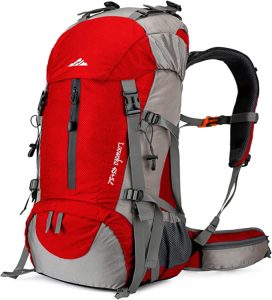
Car camping
When camping in a car or truck, make sure your gear is lightweight and compact so it takes up as little space as possible. You’ll need to bring supplies for cooking and sleeping, but most of your gear can be rented or bought along the way.
Hiking
If you’re planning a strenuous hike, make sure to pack a backpack for travel or hiking with plenty of food, water, and sunscreen. And don’t forget sturdy shoes and clothes that will protect you from the elements.
Cruising
When cruising around a destination on a ship or boat, keep in mind that there are typically few restaurants and no stores available at sea – so plan accordingly! Pack your backpack with some kind of light foods like sandwiches and fruit, and bring drinks in reusable containers.
What type of luggage should you bring with you on your trip?
There’s no one-size-fits-all answer to this question, because the type of luggage you bring will largely depend on your travel style and location. If you’re traveling by plane, for example, it might be helpful to pack a backpack for travel that can be easily carried through security checkpoints.
If you’ll be staying in specific areas or taking short trips around town, a smaller bag filled with essentials like clothes and toiletries might work better. And if you’re planning a multi-day hike or backpacking trip through rugged terrain, make sure to bring enough food and water supplies as well as a first-aid kit.
Be sure to consult your travel insurance policy or tour operator, who can provide you with specific packing tips and recommendations based on the kind of trip you’re taking.
Always Try To Pack a backpack for travel Light
One of the most important rules for packing for a trip is to always try to pack as light as possible. This not only saves you time and hassle, but it also keeps your baggage weight down, which can make traveling easier and more comfortable.
When packing your luggage, remember to bring essentials like clothes and toiletries (including sunscreen and insect repellent), toothbrush and Toothpaste, medications if required, toilet paper, books or entertainment items (such as movies or games), In case of emergencies such as losing passport etc., etc..
How To Pack a Backpack for travel With Clothes
How to Pack Clothes for Travel
When it comes to packing clothes for travel, strategy is key. The first rule of thumb is to wear your bulkiest items on the plane. This includes heavy shoes, jackets, or sweaters, which frees up valuable space in your backpack. If you have items like thick jeans or a second pair of shoes that you need to pack, place them in the vertical middle of your bag, as close to your body as possible. This ensures better weight distribution and keeps your backpack comfortable to carry. Mid-weight clothes like sweaters or shirts should be placed above the heavier items, while lightweight clothes such as t-shirts, underwear, or socks can go at the bottom of your backpack. When learning how to pack a backpack for travel, the arrangement of clothing plays a crucial role in maintaining balance and ease during your trip.
Rolling vs. Folding Clothes
Now that you’ve decided where to pack your clothes, the next question is how to pack a backpack for travel more efficiently: should you roll or fold your clothes? Rolling clothes generally saves more space and reduces wrinkles compared to traditional folding. However, for optimal packing, a hybrid method is often recommended. Roll your lighter items, such as t-shirts and underwear, while folding bulkier items like jeans or jackets. This combination helps you maximize space while keeping your clothes in better condition. Another way to up your packing game is by using packing cubes, which organize your clothes neatly and keep them easily accessible.
Packing Cubes for Better Organization
Packing cubes are a game-changer for keeping your clothes organized, especially if you’re traveling for an extended period or visiting multiple destinations. These cubes allow you to separate your wardrobe based on climate, activity, or preference. For example, use one cube for summer clothes like swimsuits and shorts, and another for colder weather items like sweaters or jackets. You can also have a designated “Essentials Packing Cube” for items like socks, underwear, or any other daily necessities. Packing cubes fit perfectly into most travel backpacks and help streamline the packing process, making it easier to locate items without having to rummage through your bag.
What kind of accessories should you take with you on your trip?
Some basic accessories that can come in handy while traveling include:
While packing for your trip, don’t forget about the essential accessories that can make your journey more comfortable and convenient. Here are some must-have items to consider:
- Sturdy Backpack: A reliable backpack is the cornerstone of any travel experience. Choose one that is durable, waterproof, and has multiple compartments for easy organization.
- Travel-Sized Toiletries: Pack a compact toiletry kit containing essentials like shampoo, soap, toothbrush, toothpaste, sunscreen, and insect repellent. Consider travel-sized or reusable containers to save space.
- Entertainment: Bring along headphones, earplugs, and a portable charger for your devices to enjoy music, movies, or books during your travels.
- Electronics Case: Protect your laptop or tablet with a small, lightweight case that fits easily into your backpack.
- Hydration: Stay hydrated with a reusable water bottle. It’s also handy for cleaning dishes or brushing teeth.
- Packing Cubes: Use packing cubes to organize your clothes and prevent wrinkles. They also help maximize space in your backpack.
- Important Documents: Carry copies of your passport, visas, and any necessary travel documents. Consider scanning them and saving digital copies in case of loss.
Additional Considerations:
- Universal Power Adapter: If you’re traveling to multiple countries, a universal power adapter will ensure you can charge your devices anywhere.
- First-Aid Kit: Pack a small first-aid kit with essential medical supplies.
- Travel-Sized Umbrella: A foldable umbrella can be a lifesaver in unexpected rain showers.
- Neck Pillow and Eye Mask: For comfortable travel, consider bringing a neck pillow and eye mask for flights or long bus rides.
By packing these essential accessories, you can make your travel experience more comfortable, organized, and enjoyable.
How to Pack for International Travel
Choosing the Right Travel Backpack
When preparing for international travel, choosing the right backpack is crucial. A good travel backpack makes packing easier by offering compartments and organization tools that streamline the process. Unlike hiking backpacks, which are typically top-loading and lack easy access, a real travel backpack opens from the front, much like a suitcase. This allows you to quickly access your belongings without having to dig through layers of packed items. The best travel backpacks are also carry-on-sized, making them ideal for international flights where space and weight restrictions apply. Learning how to pack a backpack for travel efficiently starts with picking a bag designed for travel, not just any backpack.
Packing Heavy Items Near Your Body
One of the key principles when considering how to pack a backpack for travel is weight distribution. Packing heavy items like your laptop or camera gear as close to your back as possible helps maintain the backpack’s balance and keeps the load manageable. This placement ensures that the weight is centered, reducing strain on your shoulders and back as you move. Additionally, keeping these items close to your body provides better protection for fragile items since they are less likely to shift during your journey. Secure your electronics in a dedicated laptop compartment to keep them safe and easily accessible at airport security.
Rolling Clothes for Efficient Packing
Rolling clothes is a widely recommended packing technique, especially for international travel. When you roll your clothes, you not only save space but also reduce wrinkles, which is particularly helpful when packing outfits for multiple days. Rolled clothing fits neatly into packing cubes and allows for more efficient use of your backpack’s space. Start by rolling lightweight items such as t-shirts, then progress to bulkier items like jeans or sweaters. Rolling also makes it easier to see everything in your bag without disturbing the rest of your items, saving you time when you need to quickly grab an outfit on the go.
Using Packing Cubes for Organization
Packing cubes are an excellent tool for keeping your clothes and belongings organized during long international trips. They allow you to separate your clothing based on type, season, or even destination. For example, you could have one cube for warm-weather clothes, another for cold-weather gear, and a third for essentials like underwear and socks. These cubes make it easy to stay organized, as you can quickly access the items you need without unpacking everything. They also help compress your clothes, maximizing the space in your backpack. Using packing cubes is one of the best ways to simplify how you organize and pack your travel backpack.
6 Set of Various Colored Packing Cubes in 4 Sizes
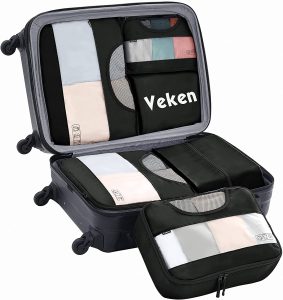
How to keep your passport and other travel documents safe while travelling
To protect your passport and other travel documents, it is important to keep them safe in a secure place.
Here are some tips:
- Keep your passport and visa(s) in a separate, locked folder or bag from all of your other personal belongings
- Protect the passport itself with a protective cover like an envelope or plastic sleeve when not being used
- Store the passport securely away from moisture and dust (for example, inside an airtight container)
- Keep a copy of your passport with you at all times in case it is lost or stolen
- Don’t travel without a valid passport
Pack a Backpack for Air Travel
When packing for air travel, it is important to be as organized as possible. Make sure to pack everything you need in a sturdy backpack and avoid bringing unnecessary items with you.
Here are some tips to pack a backpack for travel (National or International Flight):
- Label each item in your backpack so that you know where it belongs
- Pack smaller items at the bottom of the backpack and larger items higher up so they don’t take up too much space when TSA checks your bag.
- Include a photocopy of all of your passport information (name, photograph, etc.) so that if something does happen to your original document, you will have a copy to show the airline.
- Make sure that your passport is secured in a safe place and packed in an appropriate travel document cover if flying internationally
- Bring a full water bottle and snacks with you to avoid feeling hungry or thirsty during the long flight.
How to Pack Clothes
When packing for clothes, it is important to think about what you will need and to avoid bringing unnecessarily bulky or heavy items with you.
Here are some tips:
- Pack only the clothes that you plan on wearing during your trip
- pack multiple small outfits instead of one large outfit
- Don’t bring weather-appropriate clothing if the forecast calls for rain or thunderstorms while you’re travelling – this could damage your belongings in the event of a stormy flight
- If you’ll be travelling in a hot climate, make sour to pack a backpack for travel with light clothing and Air Conditioning adapter (if necessary)
- Don’t bring excessive amounts of souvenirs or unnecessary items with you – especially if you will not be carrying them with you while traveling.
Toiletries
When packing for toiletries, it is important to think about the types of liquids that you will be carrying with you and whether they are permitted in your destination’s airport.
Here are some tips:
- Check the specific regulations governing travel with liquids before traveling – many airports have restrictions on bringing certain types of liquids through security
- Pack a small selection of medications, lip balm, deodorant, shampoo and conditioner in case you run out while travelling
- If travelling with children or pets make sure to pack enough supplies for them as well – thing like diapers, food, water dishes and toys.
Computer
Most airlines allow laptops, tablets and other electronic devices in checked baggage. However, it is a good idea to check the specific regulations governing travel with electronics before you leave home.
Here are some tips:
- Make sure your device has all of the necessary chargers and cables
- Protect your laptop in a durable case or sleeve
- Remove any sensitive information from your device prior to packing it away 4. Store your device in a locked container when not in use.
Water Bottle
When packing for your trip, it is important to remember to pack a water bottle. Many airports do not allow liquids through security and dehydration can quickly occur if you are not drinking enough fluids while travelling.
Here are some tips:
- Pack a sturdy water bottle that can hold at least 20 ounces (500 milliliters)
- Make sure the lid seals tightly – airtight bottles will keep bottled waters from spoiling in hot climates
- Fill up the bottle before you leave home so that there is no temptation to drink from suspect source(s) on your travel.
Everything Else
When packing a backpack for your trip, it is important to remember to pack a backpack for travel, a small bag containing essentials like toiletry items, sunscreen and insect repellent. You never know when something might go wrong and you’ll need these supplies on hand. And of course, don’t forget about cigarettes and alcohol – they are not allowed in many airports nor on most airline flights!
Conclusion: how to pack a backpack for travel
In conclusion, mastering how to pack a backpack for travel is all about smart planning, strategic organization, and selecting the right gear. A well-chosen travel backpack that fits your needs makes a world of difference, offering easy access and compartments to keep everything organized. Rolling your clothes, packing heavier items close to your back, and using packing cubes are key techniques to maximize space and ensure comfort throughout your journey. Whether you’re embarking on a weekend getaway or a long international trip, these packing methods will not only make your travel smoother but also more enjoyable by reducing stress and avoiding overpacking. Remember, less is more when it comes to packing. Prioritize essentials, and focus on keeping your backpack light and well-balanced. With the right approach, your backpack can hold everything you need for a successful, comfortable trip, helping you move through airports and explore new destinations with ease.


